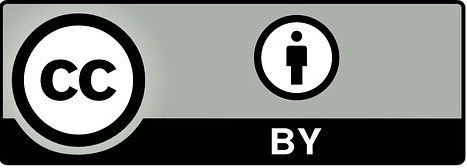A Corpus-based Analysis of Adverbs Ending in –mente in Projecting Clauses in Benito Pérez Galdós’s Fictional Narratives
DOI:
https://doi.org/10.17398/2660-7301.43.243Keywords:
Galdós, Adverbs ending in -mente, Discourse presentation, Corpus approachAbstract
In this article, we analyse Benito Pérez Galdós’s use of adverbs ending in -mente in his fictional narratives. The study focuses on those examples identified in projecting clauses that introduce stretches of direct speech. In order to search for the examples under analysis, a corpus-stylistic approach was used. First, we carried out a comparison of the examples identified in a corpus of Galdós’s novels against the backdrop of a reference corpus made up of nineteenth-century Spanish fictional narratives. Then, we analysed the examples identified across Galdós’s novels, focusing on three self-contained functional patterns: characters’ voices, their psychological dimension and their body language. As will be shown, Galdós’s extensive use of adverbs ending in -mente results in stylistically significant functions, such as characterisation and the construction of fictional universes.
Downloads
References
ARROYO DÍEZ, M.C. (2011): Aspectos espaciales y visuales en las primeras novelas contemporáneas Benito Pérez Galdós y su repercusión en la novela española actual. Tesis doctoral, Universidad de Valladolid.
BALOSSI, G. (2014): A Corpus Linguistic Approach to Literary Language and Characterization: Virginia Woolf's The Waves. Amsterdam, John Benjamins.
CALDAS-COULTHARD, C.R. (1987): «Reported speech in written narrative texts». En Coulthard, M: Discussing Discourse. Birmingham, University of Birmingham, págs. 149-167.
CARBONERO, P. (1978): «Criterios para una caracterización funcional de los adverbios». Revista Española de Lingüística, 8, págs. 167-197.
CASARES, J. (1992): Introducción a la lexicografía moderna. Madrid, CSIC.
CULPEPER, J. (2001): Language and Characterisation. People in Plays and Other Texts. Harlow, Pearson Education.
––– (2009): «Keyness: Words, parts-of-speech and semantic categories in the character-talk of Shakespeare’s Romeo and Juliet». International Journal of Corpus Linguistics, 14.1, págs. 29-59.
DOMÍNGUEZ DE RODRÍGUEZ-PASQUÉS, P. (1970): «Morfología y sintaxis del adverbio en -mente». En Magis, C.H. (ed.): Actas del III Congreso Internacional de Hispanistas. México, El Colegio de México, págs. 293-303.
EGEA, E.R. (1979): Los adverbios terminados en -mente en el español contemporáneo. Bogotá, Instituto Caro y Cuervo.
FISCHER-STARCKE, B. (2010): Corpus Linguistics in Literary Analysis: Jane Austen and her Contemporaries. Londres, Continuum.
FUENTES RODRÍGUEZ, C. (1987): «El adverbio de frase». Revista Española de Lingüística Aplicada, 3, págs. 55-74.
GARCÍA-PAGE, M. (1991): «El adverbio en -mente. Motivación contextual en formaciones léxicas anómalas». Anuario de Estudios Filológicos, 14, págs. 149-182.
––– (1993): «Breves apuntes sobre el adverbio en -mente». Verba, 20, págs. 311-340.
HAKEMULDER, F. (2016): «Empirical Stylistics». En Sotirova, V. (ed.): The Bloomsbury Companion to Stylistics. Londres-Nueva York, Bloomsbury, págs. 189-207.
HALLEBEEK, J. (1985): «El adverbio. Bosquejo de una posible morfosintaxis del elemento adverbial en español». Dicenda, 4, págs. 35-56.
HALLIDAY, M.A.K. (2004): An Introduction to Functional Grammar. Londres, Arnold.
HARRISON, C. (2017): Cognitive Grammar in Contemporary Fiction. Ámsterdam, John Benjamins.
HERNÁNDEZ ALONSO, C. (1974): «El adverbio». Thesaurus. Boletín del Instituto Caro y Cuervo, 29, págs. 48-67.
KORTE, B. (1997): Body Language in Literature. Toronto, University of Toronto Press.
KOVACCI, O. (1980): «Sobre los adverbios oracionales». Boletín de Filología de la Universidad de Chile, 31.2, págs. 519-535.
LAKOFF, G. (1970): «Adverbios y operadores modales». En Sánchez de Zavala, V. (ed.): Semántica y sintaxis en la lingüística transformatoria. II. Algunos temas y planteamientos nuevos. Madrid, Alianza, págs. 319-336.
LAMBERT, M. (1981): Dickens and the Suspended Quotation. New Haven, Yale University Press.
LÁZARO CARRETER, F. (1953): Diccionario de términos filológicos. Madrid, Gredos.
MAHLBERG, M. (2013): Corpus Stylistics and Dickens’s Fiction. Londres, Routledge.
––– (2014): «Corpus stylistics». En Burke, M. (ed): The Routledge Handbook of Stylistics. Londres, Routledge, págs. 387-392.
MAHLBERG, M. y SMITH, C. (2012): «Dickens, the suspended quotation and the corpus». Language and Literature, 21.1, págs. 51-65.
MAHLBERG, M., SMITH, C. y PRESTON, S. (2013): «Phrases in literary contexts: Patterns and distributions of suspensions in Dickens’s novels». International Journal of Corpus Linguistics, 18.1, págs. 35-56.
MCINTYRE, D. y WALKER, B. (2019): Corpus Stylistics: Theory and Practice. Edimburgo, Edinburgh University Press.
MONTORO, R. (2012): Chick Lit: The Stylistics of Cappuccino Fiction. Londres, Continuum.
MORENO DE ALBA, J.G. (1988): «Sobre la definición y clasificación del adverbio». Anuario de Letras: Lingüística y Filología, 26, págs. 31-66.
NIETO CABALLERO, G. (2018): «Metodologías de corpus en el análisis de textos literarios en lengua española: el ejemplo de Pérez Galdós». Estudios Humanísticos. Filología, 40, págs. 373-391.
PATTISON, W.T. (1954): Benito Pérez Galdós and the creative process. Minneapolis, University of Minnesota Press.
RUANO SAN SEGUNDO, P. (2016): «A corpus-stylistic approach to Dickens’ use of speech verbs: Beyond mere reporting». Language and Literature, 25.2, págs. 1-15.
SCOTT, M. (2013): WordSmith Tools Manual. Version 6.0. Liverpool, Lexical Analysis Software.
STOCKWELL, P. (2009): Texture: A Cognitive Aesthetics of Reading. Edimburgo, Edinburgh University Press.
STUBBS, M. (2005): «Conrad in the computer: Examples of quantitative stylistics methods». Language and Literature, 14.1, págs. 5-24.
VERA LUJÁN, A. (1979): «La problemática gramatical/funcional en una tipología categorial. El adverbio en espafiol». Lexis, 3, págs. 171-194.
WEST, D. (2016): «Cognitive Stylistics». En Sotirova, V. (ed.): The Bloomsbury Companion to Stylistics. Londres, Bloomsbury, págs. 109-121.



